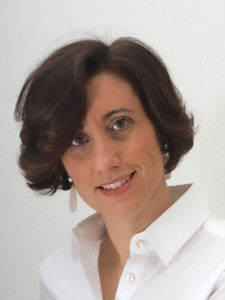 Eleonora Secchi is currently the Group Leader of the bioMatter Microfluidics Group at ETH Zurich, Switzerland. She earned a B.A. in Physical Engineering, an M.Sc. in Nuclear Engineering, and a Ph.D. in Chemical Engineering and Industrial Chemistry from the Polytechnic University of Milan. Her graduate research work focused on developing optical correlation techniques and their application to the study of biological and soft matter systems. From 2014 to 2016, she was a postdoctoral fellow at Ecole Normale Supérieure of Paris, working with Prof. Lyderic Bocquet on the measurement of water flow from a single carbon nanotube, which allowed her to answer a long-debated question on water slippage at the carbon–water interface. She was awarded an ETH Postdoctoral Fellowship in 2016 to join the group of Prof. Roman Stocker at ETH Zurich, where she became interested in biophysics. In 2018, thanks to a Swiss National Science Foundation PRIMA grant, Eleonora started her research group. Her research aims to understand the physical mechanisms influencing the assembly and the behavior of bacterial biofilms. Her group investigates the environmental factors and the physical mechanisms controlling bacterial transport, surface colonization, and biofilm formation in fluids, focusing on the biofilm matrix — “the dark matter of biofilms”. She exploits the precision afforded by microfluidics, combined with visualization techniques borrowed from soft matter physics, to access biofilm’s microstructure and rheology, with the ultimate goal of linking structural properties to their biological function.
Eleonora Secchi is currently the Group Leader of the bioMatter Microfluidics Group at ETH Zurich, Switzerland. She earned a B.A. in Physical Engineering, an M.Sc. in Nuclear Engineering, and a Ph.D. in Chemical Engineering and Industrial Chemistry from the Polytechnic University of Milan. Her graduate research work focused on developing optical correlation techniques and their application to the study of biological and soft matter systems. From 2014 to 2016, she was a postdoctoral fellow at Ecole Normale Supérieure of Paris, working with Prof. Lyderic Bocquet on the measurement of water flow from a single carbon nanotube, which allowed her to answer a long-debated question on water slippage at the carbon–water interface. She was awarded an ETH Postdoctoral Fellowship in 2016 to join the group of Prof. Roman Stocker at ETH Zurich, where she became interested in biophysics. In 2018, thanks to a Swiss National Science Foundation PRIMA grant, Eleonora started her research group. Her research aims to understand the physical mechanisms influencing the assembly and the behavior of bacterial biofilms. Her group investigates the environmental factors and the physical mechanisms controlling bacterial transport, surface colonization, and biofilm formation in fluids, focusing on the biofilm matrix — “the dark matter of biofilms”. She exploits the precision afforded by microfluidics, combined with visualization techniques borrowed from soft matter physics, to access biofilm’s microstructure and rheology, with the ultimate goal of linking structural properties to their biological function.
Read Eleonora’s Emerging Investigator article ‘A microfluidic platform for characterizing the structure and rheology of biofilm streamers’
How do you feel about Soft Matter as a place to publish research on this topic?
We presented a work at the interface between biophysics and fluid dynamics, with possible applications to soft matter systems. The Soft Matter readership has the perfect background to appreciate it and find further applications.
What aspect of your work are you most excited about at the moment and what do you find most challenging about your research?
Biofilms are bacterial aggregates embedded in a self-secreted polymeric matrix. They contribute to the surge of antibiotic resistance, a “global crisis” according to the UN, and cause costly biofouling and biocorrosion in the industrial sector. Studying the physical principles controlling biofilm assembly and the emergence of their properties can lead to developing novel, universal strategies to prevent and control their formation. I am excited to contribute to this medical and technological challenge while recognizing how ambitious the aim is to find universal physical principles to describe biofilm, the most diverse and widespread lifeform.
In your opinion, what are the most important questions to be asked/answered in this field of research?
Bacteria are capable of assembling a mighty physico-chemical shield to protect themselves and survive harsh environmental conditions, namely the biofilm matrix. The matrix varies greatly in its composition among different bacterial species, but it can generally be described as a polymeric gel with viscoelastic rheology. The field wonders how is the assembly of this gel-like matrix regulated and what are the mechanisms conferring to the matrix its unique physico-chemical properties.










